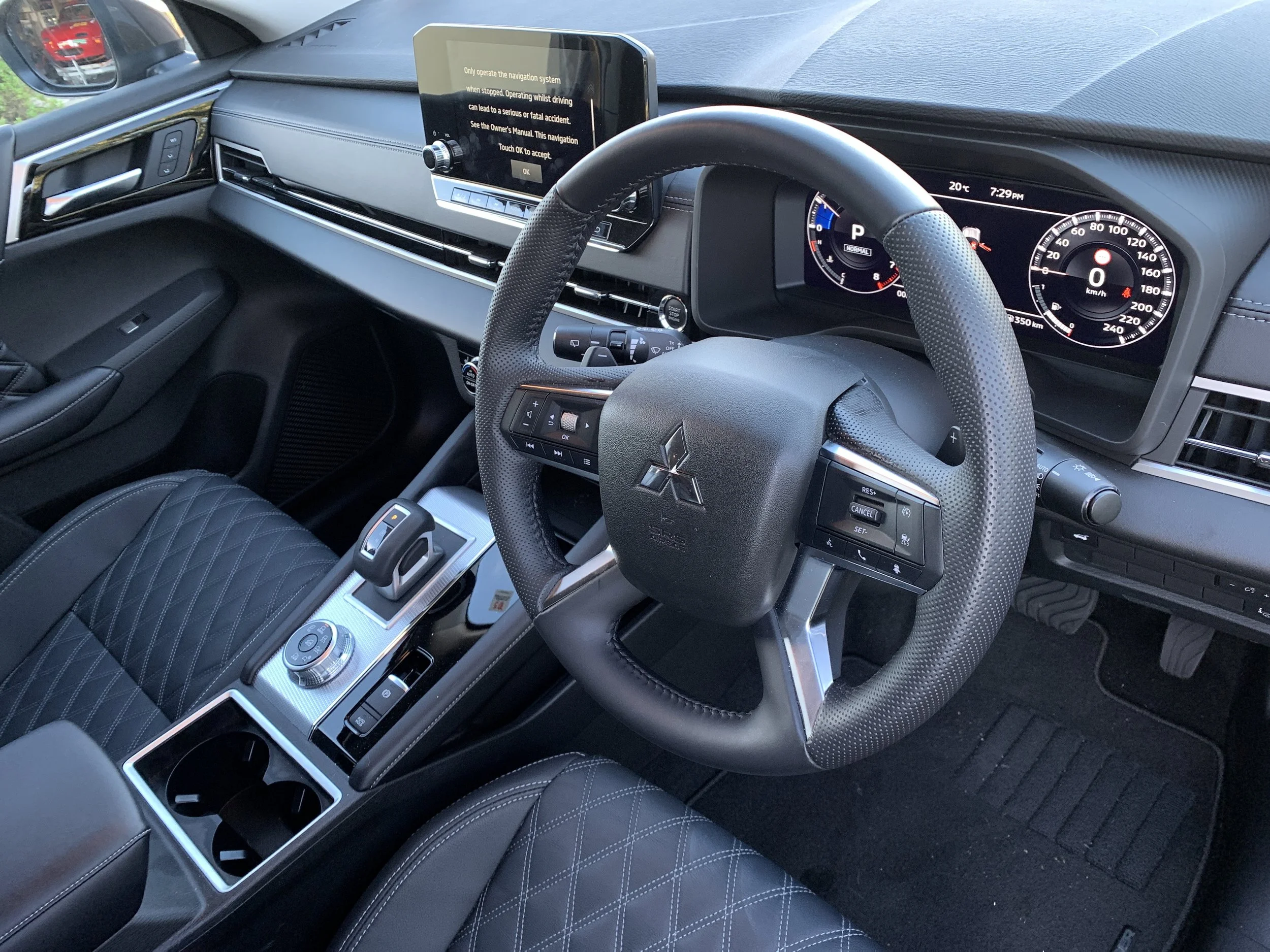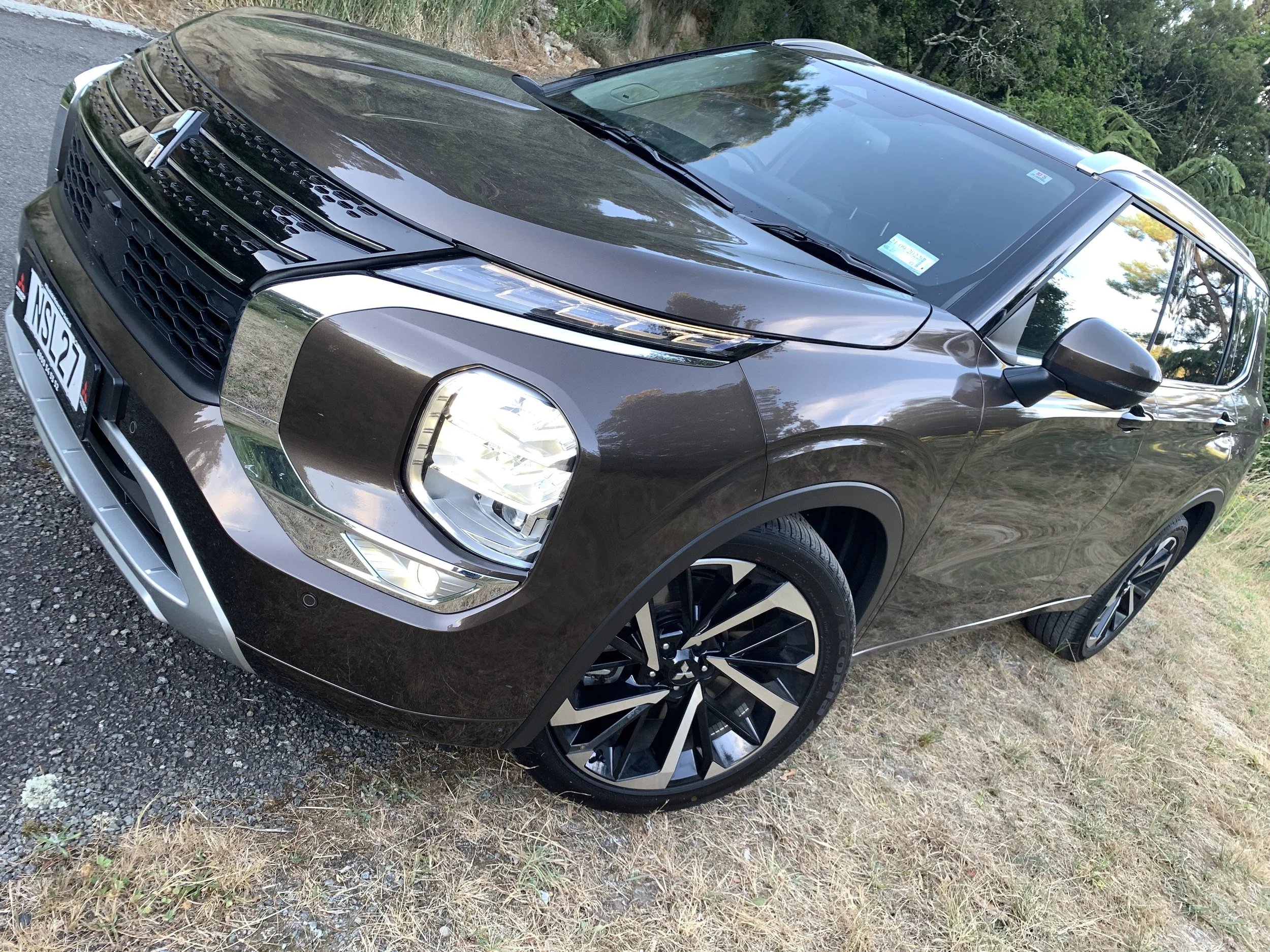Outlander running change alerted
/Buyer surprised to see old-school dials rather than digital display
The VRX press car has the high-end digital instrument cluster; an early adopter says examples arriving in the next shipment run analogue instruments.
MIGHT the world-wide shortage of computer chips have cost the latest Mitsubishi sports utility a snazzy feature?
The new-generation Outlander that hit the market shortly before Christmas is now thought to be shipping in with an old-school analogue instrument cluster because, an early adopter suspects, the high-tech wholly electronic 12.3-inch screen it was designed to take cannot be supplied.
It is not clear how long the downgrade will impact the family seven-seater or if it will affect not just the 2.5-litre fully petrol line it presently represents in but also impending models with a plug-in hybrid drivetrain. However, MotoringNZ has heard from a person claiming the PHEV he has ordered for delivery in March will not have the electronic display.
Mitsubishi Motors New Zealand’s head of marketing and corporate affairs, Reece Congdon, has yet to respond to an approach for comment.
Mitsubishi Japan is among many car makers to relate in recent months how the lack of computer chips has caused them to cut technology features. New cars can require more than 1000 chips each. Some cars have become cheaper through having to revert to less sophisticated hardware.
Dave Hartnell of Tawa has related how he believes he was affected. He ordered the new Outlander in $49,990 VRX front-drive specification in late September and subsequently test drove a dealer demonstrator car, which had a digital main instrument panel.
He was taken aback when the vehicle he ordered showed recently with analogue dials. It was then explained by the dealership delivering the car that only the initial shipment had the new-gen electronic display.
He believes the car he bought was in a second shipment that landed at the end of last month. It’s his understanding that all Outlanders in that consignment have analogue instruments. The PHEV buyer has said the same.
Hartnell said his dealer explained that MMNZ had relayed this revision to its franchises but that, in his case, the sales team had forgotten to pass the news on.
He negotiated to upgrade to all-wheel-drive VRX, from the first shipment, to achieve the feature.
The parties settled on a transfer price that was lower than the $5000 difference in recommended retail between the derivatives.
Hartnell said he no beef with his dealer, who had been highly apologetic and had worked to set things right, but felt MMNZ could have done better.
“They have certainly been exceptionally quiet about the change.”
He contacted MotoringNZ.com having read a review of a press evaluation car, supplied by Mitsubishi Motors New Zealand, that related opinion of the digital display.
(The car, pictured, has since been back with this publication and the brand did not mention the specification amendment when supplying it to this writer).
Hartnell said he was initially confused by finding the car he’d received being different to the one he’d extensively researched then trialled.
“I wondered if I was imagining things … but my wife had filmed me driving the demo car and I saw that it definitely had a different display.”
The saga has not put him off the product “this is my second Outlander and I’m a big fan” and he appreciated effort the dealer put into trying to locate a VRX front-drive with a digital dash.
The new model also become newsworthy this week for achieving top marks in New Zealand’s independent safety testing regime.
The Australasian New Car Assessment Programme, which operates from Melbourne and is co-funded by Australian agencies, meted the model the highest score ever awarded in the child occupant protection category under the latest protocols.
A score cited as being applicable to the 2.5-litre petrol editions in front and all-wheel-drive resulted from the model performing well in all four categories of assessment.
It recorded a 92 percent score in the Child Occupant Protection area, the highest recorded to date under the latest ANCAP test criteria, introduced in 2020 (but set to be superseded next year).
It also scored 81 percent for Adult Occupant Protection, 81 percent for Vulnerable Road User Protection (pedestrians and cyclists), and 83 percent for Safety Assist systems.
Full marks were awarded in the side impact and oblique pole tests. ANCAP noted "adequate to good" results in the frontal offset and full-width crash tests – with 'marginal' performance recorded for the driver's upper legs in the offset test, and for the rear passenger's head and chest in the full-width frontal crash.
The car has a centre airbag – typically designed to prevent the front passengers' heads colliding in a side impact collision – but the unit in the Outlander “did not meet ANCAP’s coverage requirements” so it applied a penalty.



















